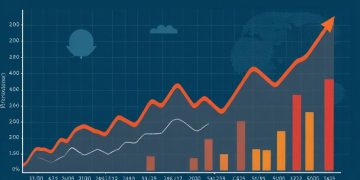Recent tariff policies are influencing global shipping patterns, with freight rates from Southeast Asia to the United States surpassing those from China, according to data from ocean freight analytics firm Xeneta.
As of April 25, average spot rates from China to the U.S. reached $2,709 per forty-foot equivalent unit (FEU), up from $2,457 on March 31. In contrast, rates from Southeast Asia rose more sharply to $2,890 per FEU, an increase of $426, representing a 17% gain. The rate gap between the two regions on routes to the U.S. West Coast widened from $7 on March 31 to $181 by April 25.
Analysts attribute the shift to a combination of falling demand for Chinese goods and increased exports from Southeast Asia, particularly Vietnam, which currently benefits from a 90-day pause in reciprocal tariffs. Peter Sand, Chief Analyst at Xeneta, said these developments reflect how tariffs are reshaping trade flows.
The HSBC Global Research’s latest Global Freight Monitor similarly noted a decline in U.S.–China trade volumes, partially offset by increased shipping from Southeast Asia.
Looking ahead, Sand noted the unpredictability of trade policy under the Trump administration, which he said complicates long-term decision-making for businesses in the global shipping sector. He added that future tariffs may continue to target China while raising challenges for investors in alternative manufacturing hubs such as Vietnam.
U.S. shippers, according to Sand, are facing a high degree of uncertainty, leading many to prepare contingency plans that may ultimately not be used.
Dan Krassenstein, Global Supply Chain Director at packaging firm Procon Pacific, offered a more optimistic assessment. He described the current increase in freight rates as temporary, driven by demand from Southeast and South Asia in response to tariffs, as well as carriers’ efforts to tighten capacity ahead of planned rate hikes in May.
Krassenstein noted that if tariffs on Chinese goods remain in place, shipping lines may permanently reallocate capacity to Southeast and South Asia. However, he suggested that due to overall global trade forecasts for 2025, vessel overcapacity may eventually push rates down again.
Discover supply chain news insights on The Supply Chain Report. Enhance your international trade knowledge at ADAMftd.com with free tools.
#TariffsImpact #SupplyChainShift #SoutheastAsiaTrade #USImports #GlobalSupplyChains #TradeRoutes #ManufacturingMigration
















